How can you identify minerals yourself?
- Posted on
- By Bart Verboven
- Posted in crystals, determining, identifying, minerals

Learn how to easily identify minerals with handy tests you can perform yourself! Discover how to determine hardness and how color and luster can set you on the right track.
A World of Minerals
There are more than 4,000 known minerals, and each year about 80-100 new ones are discovered. Only a few hundred of these are considered common.
The Art of Identification
To identify minerals, geologists must carefully examine the physical properties of a mineral. These properties include color, streak, hardness, cleavage, specific gravity, crystal form, and more.
Color
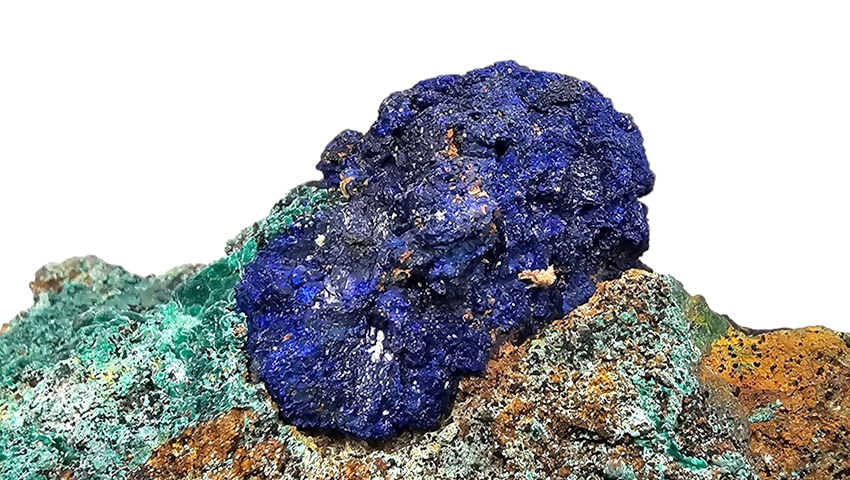 The color of a mineral is the most important characteristic for the amateur mineralogist. Many minerals exhibit different colors; the variations are mainly due to impurities or a slight change in chemical composition. For example, calcite can be white, blue, yellow, pink, or fluorescent. Surface discoloration may have changed the color of the specimen; therefore, a fresh surface should be examined.
The color of a mineral is the most important characteristic for the amateur mineralogist. Many minerals exhibit different colors; the variations are mainly due to impurities or a slight change in chemical composition. For example, calcite can be white, blue, yellow, pink, or fluorescent. Surface discoloration may have changed the color of the specimen; therefore, a fresh surface should be examined.
Hardness
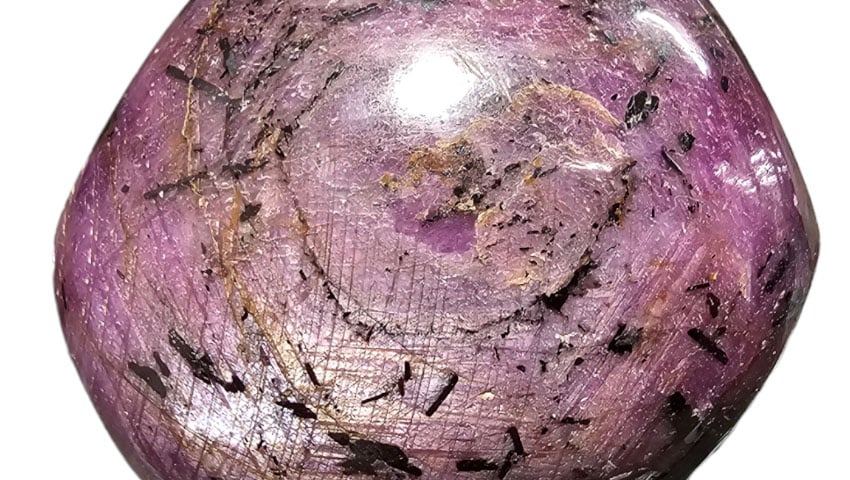 Hardness is a measure of a mineral's resistance to abrasion. A numerical value for hardness is determined using a scale that ranges from 1 (the softest) to 10 (the hardest), the Mohs hardness scale, developed by the German mineralogist Friedrich Mohs. This scale assigns hardness values to 10 representative minerals as well as other common materials such as a coin or knife. Talc is the softest mineral on this scale, while diamond is the hardest. Most minerals you encounter have a hardness between 2 and 7 on the Mohs scale. If a mineral can be scratched with a copper coin but cannot scratch glass, then the hardness of that mineral is between 3 and 6. The Mohs hardness scale is a fundamental tool in mineralogy to measure the relative resistance of a mineral to scratches. This scale helps in identifying minerals by a simple comparison of their ability to be scratched or to scratch other materials.
Hardness is a measure of a mineral's resistance to abrasion. A numerical value for hardness is determined using a scale that ranges from 1 (the softest) to 10 (the hardest), the Mohs hardness scale, developed by the German mineralogist Friedrich Mohs. This scale assigns hardness values to 10 representative minerals as well as other common materials such as a coin or knife. Talc is the softest mineral on this scale, while diamond is the hardest. Most minerals you encounter have a hardness between 2 and 7 on the Mohs scale. If a mineral can be scratched with a copper coin but cannot scratch glass, then the hardness of that mineral is between 3 and 6. The Mohs hardness scale is a fundamental tool in mineralogy to measure the relative resistance of a mineral to scratches. This scale helps in identifying minerals by a simple comparison of their ability to be scratched or to scratch other materials.
Luster
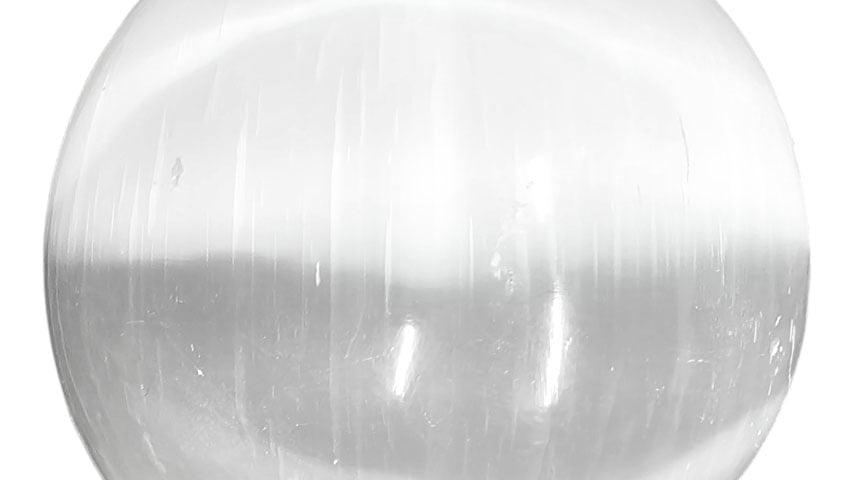 Luster refers to the brightness of light reflected from the surface of the mineral. The main types are metallic and non-metallic. Some of the more important non-metallic ones are:
Luster refers to the brightness of light reflected from the surface of the mineral. The main types are metallic and non-metallic. Some of the more important non-metallic ones are:
- Adamantine: brilliant, like a diamond.
- Earthy: dull, like kaolinite.
- Silky: the luster of silk, like satin spar, a type of gypsum.
- Greasy: an oily appearance.
- Resinous: a waxy appearance, like sphalerite.
- Vitreous: the appearance of broken glass, like quartz.
- Pearly: like mother-of-pearl; for example, the pearly luster on fossil gastropods and cephalopods.
Specific Gravity
The specific gravity of a mineral indicates how heavy the mineral is compared to water. For example, gold has a specific gravity of 15-19.3, which means it is 15 to 19.3 times heavier than water. By feeling the weight of a mineral in your hand, you can make a good estimate of the specific gravity.
Follow these simple instructions to determine the specific gravity of your mineral:
- Press the "Power" button on the digital scale. The scale should read 0.0 when nothing is on it.
- Place your dry mineral on the scale and record the weight.
- Remove the mineral.
- Place a container filled with water on the scale and press the "tare" button to zero it.
- Unfold a paperclip and wrap it around the mineral, leaving enough of the paperclip to hold with your two fingers.
- Submerge the mineral in the water, but make sure it doesn't touch the bottom (important: make sure your fingers do not touch the water or the mineral).
- Record the weight of the mineral submerged in water.
- Take the original weight of the mineral and divide it by the weight of the mineral submerged in water.
- The quotient (answer) of the two weights is the specific gravity of the mineral.
Streak Test
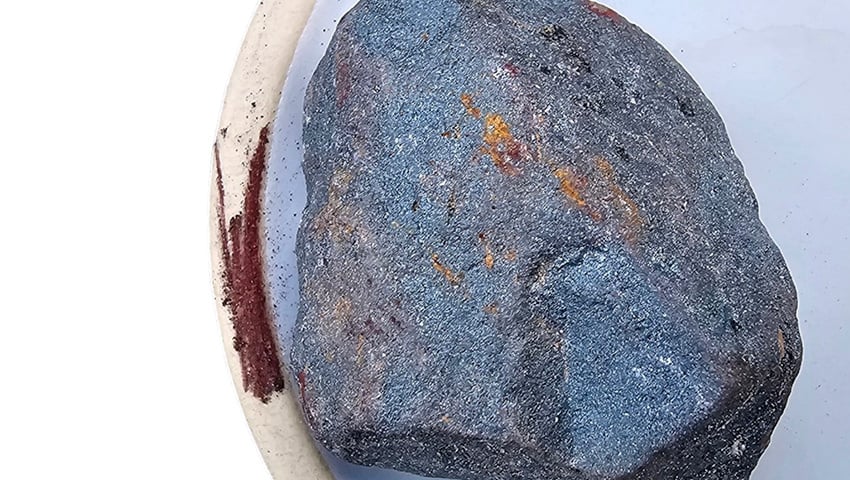 A streak test is performed by rubbing the mineral across a porcelain plate, also known as a streak plate. The color of the streak left by the mineral sometimes differs from the color of the mineral itself. A streak test is particularly useful in identifying minerals such as hematite. Hematite can come in various colors, from black to red, but always leaves a red streak. This can be achieved by scraping the mineral across the surface of a streak plate or something harder, depending on the hardness of your mineral. The color of the mineral in powder form can be a better indicator than its original color. When you successfully obtain a powdered streak of your mineral, it can help in identification.
A streak test is performed by rubbing the mineral across a porcelain plate, also known as a streak plate. The color of the streak left by the mineral sometimes differs from the color of the mineral itself. A streak test is particularly useful in identifying minerals such as hematite. Hematite can come in various colors, from black to red, but always leaves a red streak. This can be achieved by scraping the mineral across the surface of a streak plate or something harder, depending on the hardness of your mineral. The color of the mineral in powder form can be a better indicator than its original color. When you successfully obtain a powdered streak of your mineral, it can help in identification.
Odor and Taste
Some minerals have a characteristic odor, especially those containing sulfur, which smell like rotten eggs. Additionally, some transparent or translucent minerals can be tested for taste. Halite, for example, tastes very salty because it consists of sodium chloride (NaCl), better known as table salt.
Acid Test
Some minerals, such as carbonates (especially calcite), fizz and foam when they come into contact with diluted hydrochloric acid. This is due to the release of carbon dioxide gas. For sulfides, such as galena, pyrite, and sphalerite, treatment with diluted hydrochloric acid can produce the characteristic odor of hydrogen sulfide (rotten eggs).
Cleavage and Fracture
 Cleavage can be observed in minerals that tend to break along one or more flat surfaces or planes. The number of cleavage planes and their orientations relative to each other can be characteristic of specific minerals. Minerals that exhibit cleavage include calcite, halite, fluorite, topaz, and galena. However, not all minerals have cleavage, such as quartz and pyrite.
Cleavage can be observed in minerals that tend to break along one or more flat surfaces or planes. The number of cleavage planes and their orientations relative to each other can be characteristic of specific minerals. Minerals that exhibit cleavage include calcite, halite, fluorite, topaz, and galena. However, not all minerals have cleavage, such as quartz and pyrite.
Minerals can have one, two, three, four, or six directions of cleavage. These cleavage forms are (1) cubic, (2) octahedral, (3) dodecahedral, (4) rhombohedral, (5) prismatic, and (6) pinacoidal. Minerals that easily break along these weak lines produce shiny surfaces. Many crystals do not cleave but rather break or fracture instead.
Crystal Form and Habit
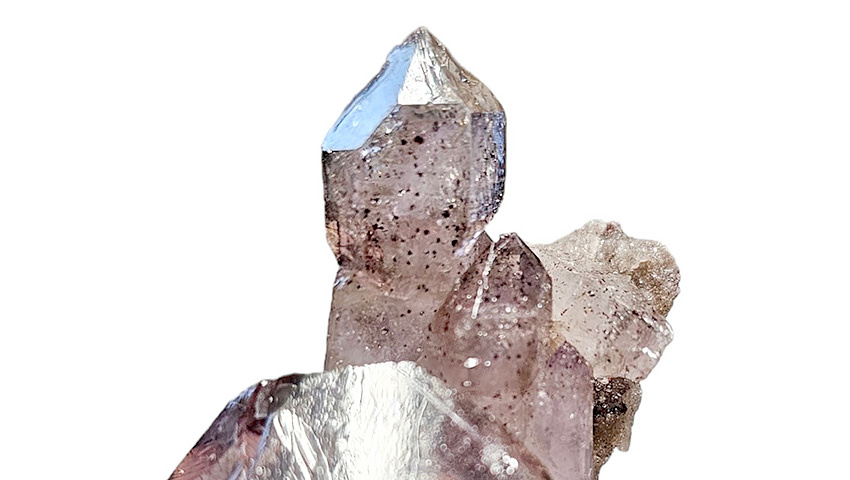 The crystal form determines the geometric shape and arrangement of crystal faces of a mineral. The crystal form always remains the same in each specimen of the same mineral, although it may be better displayed in some specimens than in others. Growth patterns, known as habit, can sometimes obscure the ideal shape of the crystal, but they can also help in identification. Some common habits are botryoidal (grape-like), striated (parallel grooves on crystal faces), and acicular (needle-like).
The crystal form determines the geometric shape and arrangement of crystal faces of a mineral. The crystal form always remains the same in each specimen of the same mineral, although it may be better displayed in some specimens than in others. Growth patterns, known as habit, can sometimes obscure the ideal shape of the crystal, but they can also help in identification. Some common habits are botryoidal (grape-like), striated (parallel grooves on crystal faces), and acicular (needle-like).
Fluorescence
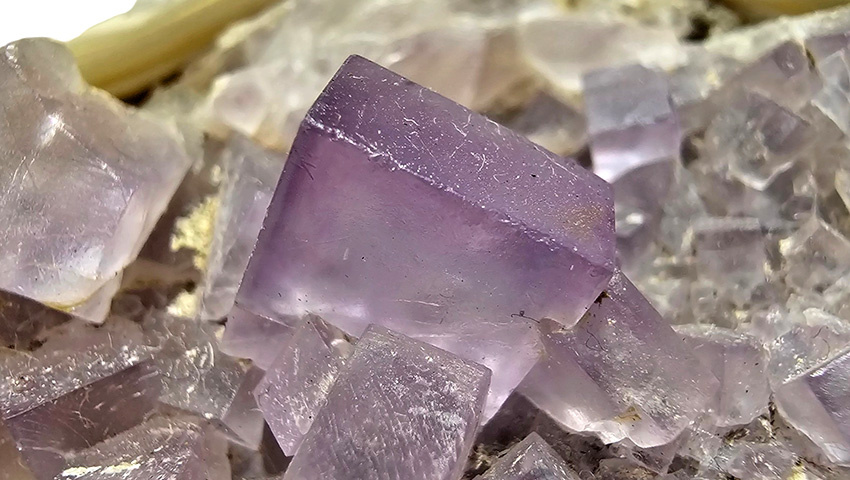 Some minerals, such as calcite, gypsum, halite, uranium minerals, and fluorite, light up in brilliant colors when viewed with ultraviolet (UV) light. UV light is normally not visible to the human eye, and it is important not to look directly at the UV source, as it can damage vision. Fluorescence can be a useful tool in identifying certain minerals, especially in cases where other physical properties are not unique enough to make a definitive identification.
Some minerals, such as calcite, gypsum, halite, uranium minerals, and fluorite, light up in brilliant colors when viewed with ultraviolet (UV) light. UV light is normally not visible to the human eye, and it is important not to look directly at the UV source, as it can damage vision. Fluorescence can be a useful tool in identifying certain minerals, especially in cases where other physical properties are not unique enough to make a definitive identification.
Toughness
Toughness is the measure of the cohesion or strength of a mineral. Although the terms used to describe toughness are not specifically mentioned in the original section, they generally refer to how a mineral responds to certain forces or pressure, such as breaking, bending, or pulverizing. Some minerals, like diamond, are extremely hard but at the same time brittle and can easily break if struck correctly. On the other hand, some minerals like talc can be very soft but possess a certain degree of flexibility or toughness that prevents them from breaking easily.
